
AN INTERVIEW WITH THE ARTIST Connecting Worlds: The Art of Maimouna Patrizia Guerresi
Aug 24, 2012 FEATURE, Interview

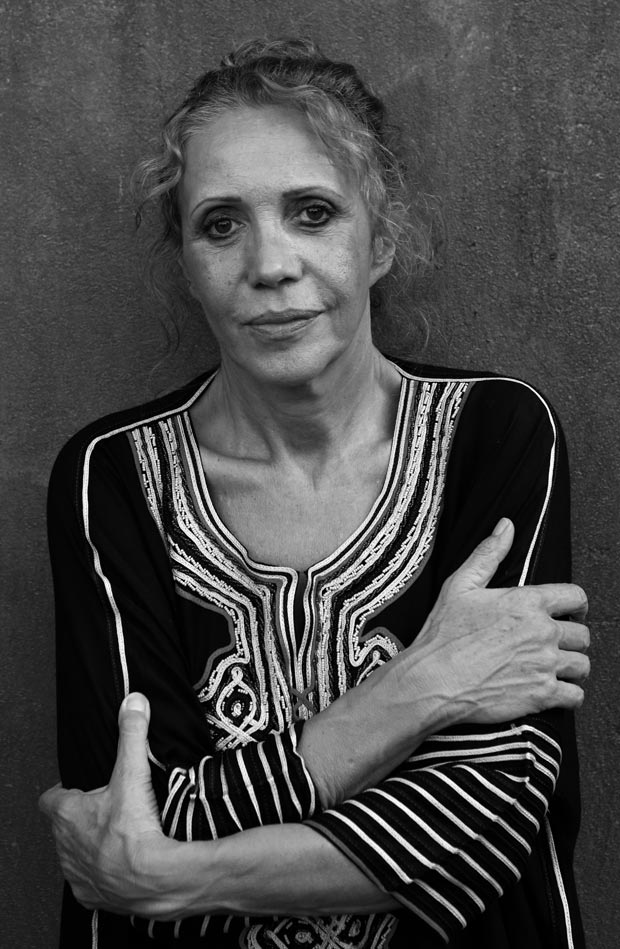 Portrait of Maimouna Guerresi / Courtesy of the Artist
Portrait of Maimouna Guerresi / Courtesy of the Artist
The veiled figures that I represent in my work symbolize the sacredness of the body as a sacred building, as a "temple of the soul" according to a style reminiscent of some traditional Madonnas of classical European art. These bodies of men or women, I represent them in their upward tension drained from the raw material and they become like Gothic architecture. They are mystical bodies that transcend the temporal dimension to enter the sacred symbolic reality, "true reality" as Rumi says.
For this work, I focused on the highest part of the body which is exposed "to the elements of life": the Head. I've covered and crowned it with a series of artifacts in the form of hat - minarets that I made in the traditional way. There is also an element of ritual, as the hats are made with simple materials and pieces of cloth, collected, put together and then stitched as is the tradition of the Baifall Muslim Sufis of Senegal who manually produce their own clothes. The hat minarets are tall and narrow forms of architecture with which I dress my characters. The figures in the photographs conceal their face with a hand gesture, are blindfolded or simply close their eyes. They seem to draw away from the world to get in tune with the cosmic spirit and divine. The hats are for me like castles or fortresses that protect the head but they can also be seen as an extension of the body, a type of receptive antenna or channel that lead and transmit spiritual energy. One of these pieces, I called Touba Minaret in memory of the minaret of the holy city of Touba.
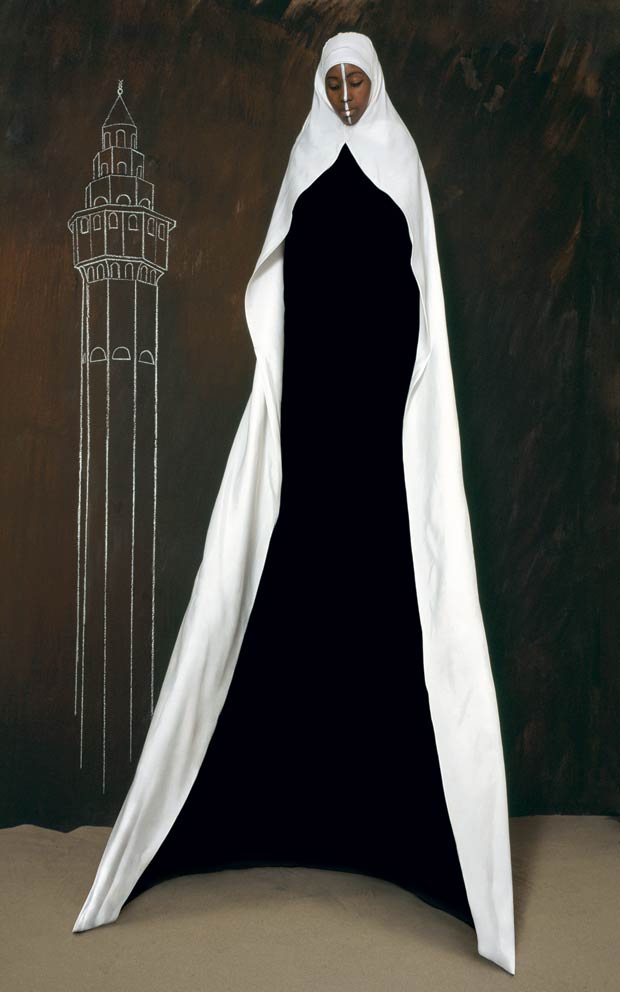 Mother Minaret, 2007, Lambda Print, on aluminum, 200x125 cm / Courtesy of the Artist
Mother Minaret, 2007, Lambda Print, on aluminum, 200x125 cm / Courtesy of the Artist
The character of 'Illumination' wearing a white coat with a round base is not just a whirling dervish. It is reminiscent of him of course, but the picture has already become something else. He is a metaphorical representation of the many worlds and constellations where inner beauty and aesthetic appearance are joined together as the symbolic representation of infinity, in a mystical union with the divine universe expanding and contracting like a breath. This circular motion is like a never-ending spiral that leads to the dissolution of the self into divine beauty as well as like the mystical knowledge that floods the heart of every seeker, leading to the search for 'interior illumination.
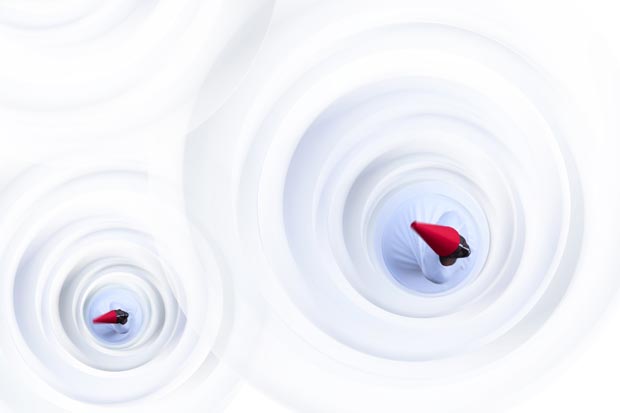 Illumination II, 2012, Lambda Print, on aluminum, 120x180 cm / Courtesy of the Artist
Illumination II, 2012, Lambda Print, on aluminum, 120x180 cm / Courtesy of the Artist
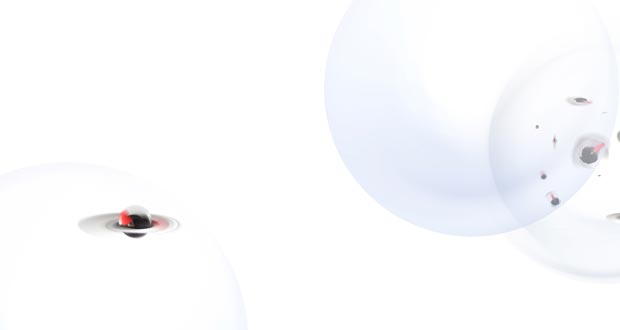 Illumination III, 2012, Lambda Print, on aluminum, 40x70 cm / Courtesy of the Artist
Illumination III, 2012, Lambda Print, on aluminum, 40x70 cm / Courtesy of the Artist
My early work has to be seen in the context of body art. I was an artist and an artwork at the same time. I tried to attain cosmic contact with the universe, becoming in my performances a tree that mediates between heaven and earth. I identified with nature and with mythical characters like Daphne who, in mythology, turns into a tree to escape the touch of Apollo. As I continued to want to express in my art the concept of metamorphosis but not only of the body, I sought to represent the spiritual transformation in the mystical bodies of the 'Giants' where architecture and black spaces become part of the body itself. This also underwrites the recent work whether the 'Illumination' or 'Indian Red Cosmos' series that I am exhibiting in India in the present and upcoming exhibitions. To me, it is impossible to divide my most intimate thoughts and my life experiences from my will to express myself through art.
My first 'Giant' character was 'Fatima' in 2000. At that time, I wanted to portray an image of a veiled woman who could express through the face alone compassion, mercy, but also the mystery and fear of the unknown and different. I represented the concept with a face of an African woman and called the piece Fatima, a name that recalls both the Holy Christian and Muslim traditions. A few years later, I got this idea of creating different characters with the same common Muslim names of the people who posed for photos, such as Fatou, Kunta, Ibrahim, Mussa, Dauda, but which also bring to mind Biblical figures like Abraham, Moses, David, etc.
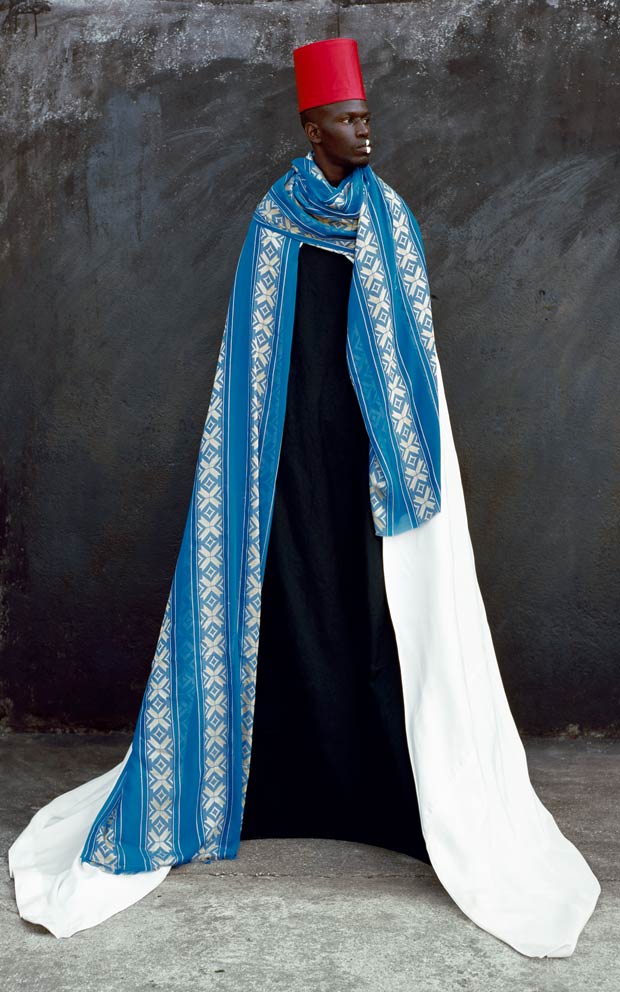 Ibrahim, 2007, Lambda Print, on aluminum, 200x125 cm / Courtesy of the Artist
Ibrahim, 2007, Lambda Print, on aluminum, 200x125 cm / Courtesy of the Artist
In my work, I emphasize particularly the feminine-divine, the great mother, clement and merciful, as God is "like a welcoming womb." In fact, the keyword of the basmala - Bismillah al-Rahman al-Rahim, which means In the Name of God, the Clement and Merciful - denotes the feminine. From the root rahima comes rahim which means merciful from which derives the word for uterus: rahm. 'Genitilla - al Wilada' is a character who has two names: Genitilla after an ancient pagan festival, and the other al wilada meaning "the pregnant woman" in Arabic. This work shows a female figure wearing a dress and sculpture, with a large central black hole, from where the bubbles come out as many new worlds and light. I also have to say that this is the first time someone compares the spirit of my work with the strength and suffering of the extraordinary artist Frida Khalo. This makes me happy. As far as the feminine aspect of Sufism, I know that in Sufi Islam it is strong but often hidden. In the history of Sufism, however, there have been many women of great importance such as the famous 8th-century saint and poet, Rab'ia al-Adawiyya, and many others, including the modern great saint Murid, Kunta m'Bache Fal, whom I had the honour of knowing before she passed on to another life.
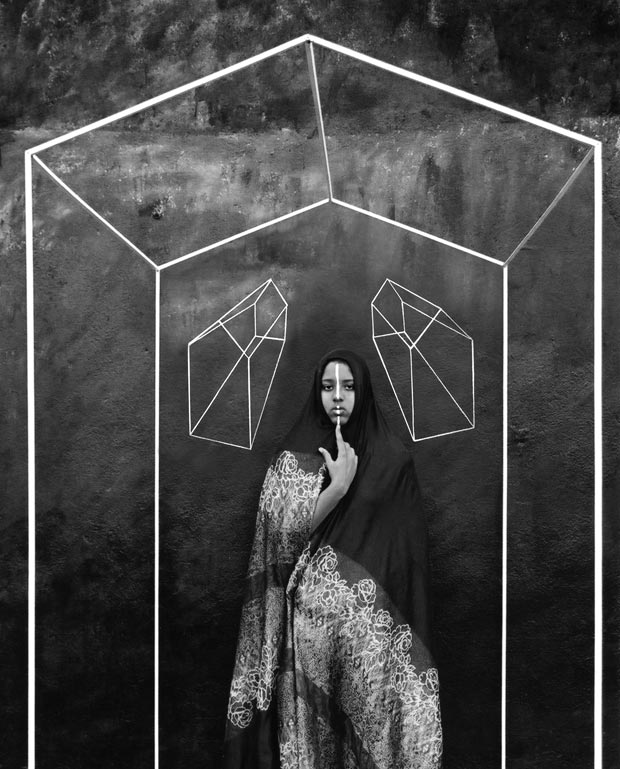 The Ligth Signs - Adji and Tree House, 2004, Lambda print on aluminum, 50x62 cm / Courtesy of the Artist
The Ligth Signs - Adji and Tree House, 2004, Lambda print on aluminum, 50x62 cm / Courtesy of the Artist
The photographic series 'The Sisters' interpreted by my daughters Marlene and Adji tells the story of two different worlds that are however spiritually similar. The two girls, one black, and one white meet and converse showing the possibility of real communion and family. Adji with a veil covering her head, identifies herself as an African Muslim, while Marlene of European Christian heritage has her head uncovered. The sisters are represented in hieratic and mystical poses during intimate moments and undertaking everyday gestures. They too evoke the iconography of the Madonna of the past. I am particularly interested in investigating the infinite possibilities of the human spirit, and, in the case of women's spirituality, recounting the discomfort, charm and value of diversity.
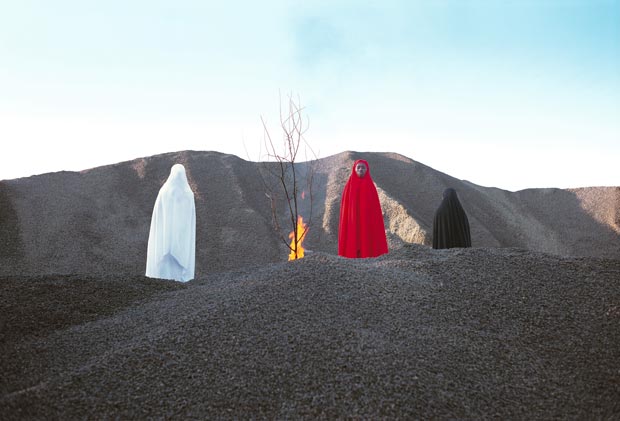 The Black Mountains 3, 2006, Lambda Print, on aluminum, 100x147cm / Courtesy of the Artist
The Black Mountains 3, 2006, Lambda Print, on aluminum, 100x147cm / Courtesy of the Artist
The veil and the mantle are symbols which are closely linked. I called one of my recent shows 'The Poem of the Mantle' inspired by the famous poem of Muslim literature the 'Qasida al-Burda' composed by al-Busiri in the 13th century. Consisting of sacred verses praising the Prophet Muhammad which, if recited continuously, can bring about healing and miracles. So the continual repetition of the Burda and the veil in my work are like mantras and like the basmala, a formula of enchantment, prayer, thaumaturgy, and dhikr. My art is a reference to share the beauty, the divine mystery and an inner surface that expressing cosmic beauty heals the diseases of the soul.
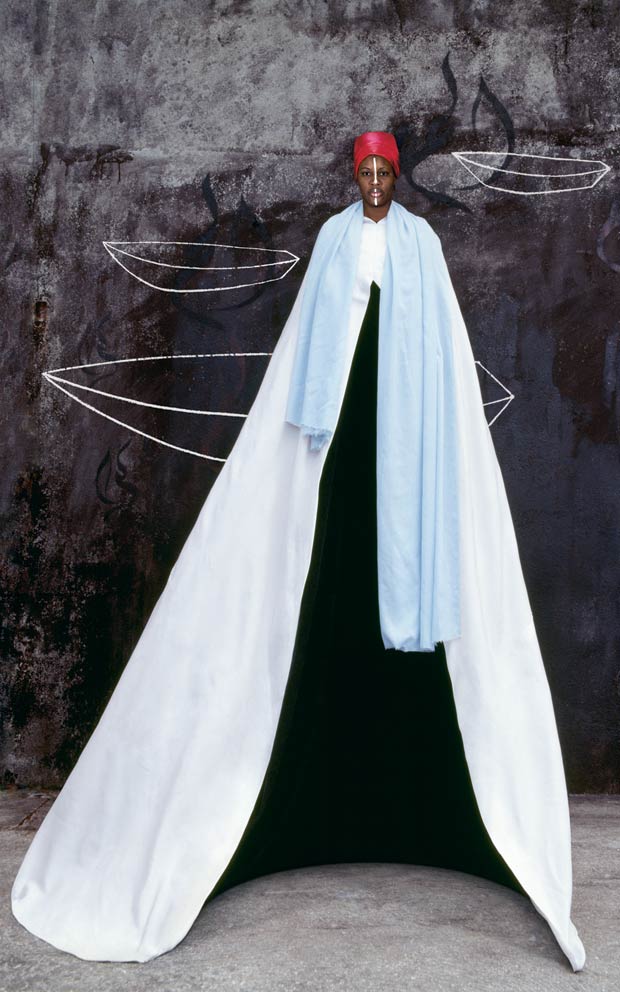 Faluka, 2010, Lambda Print, on aluminum,200x125cm / Courtesy of the Artist
Faluka, 2010, Lambda Print, on aluminum,200x125cm / Courtesy of the Artist
Thanks to you it was a real pleasure to answer your very deep questions and to share my thoughts and my feelings with a sensitive journalist like you.
Comments
Add a comment